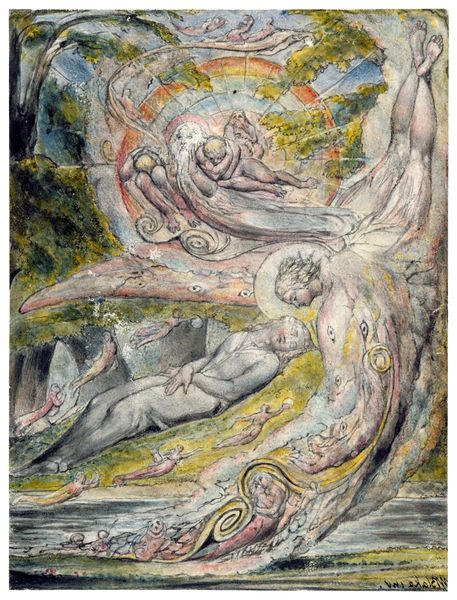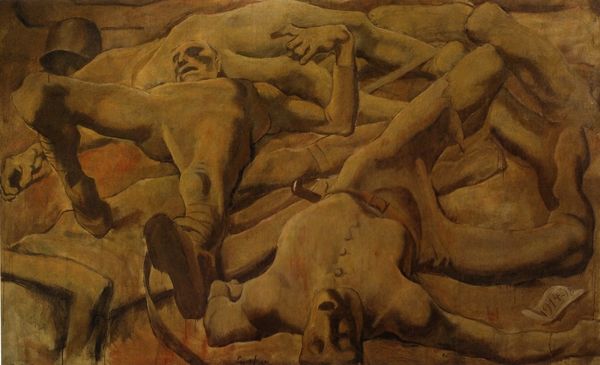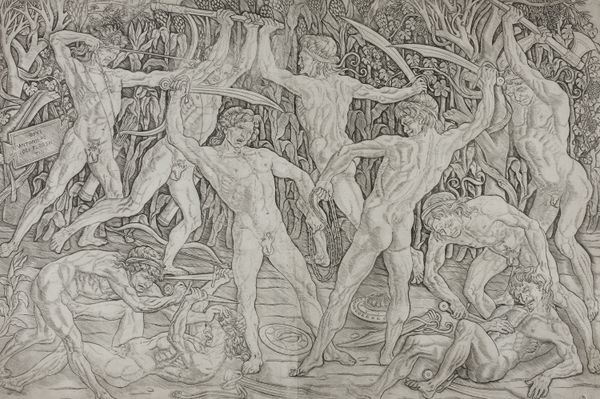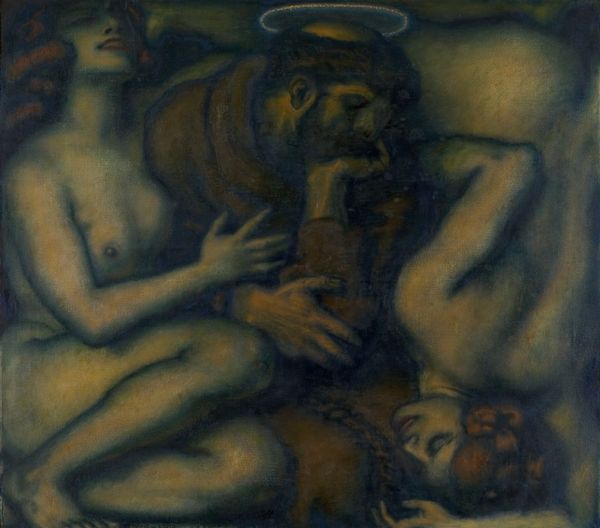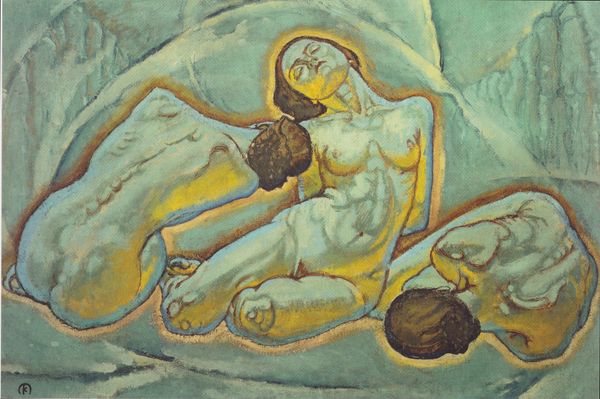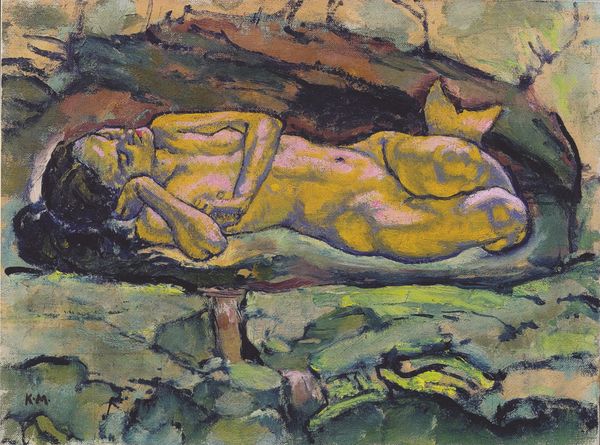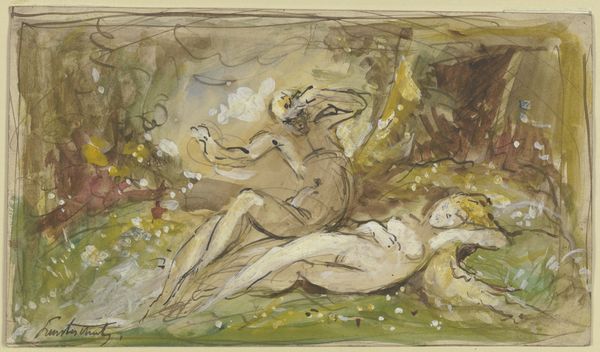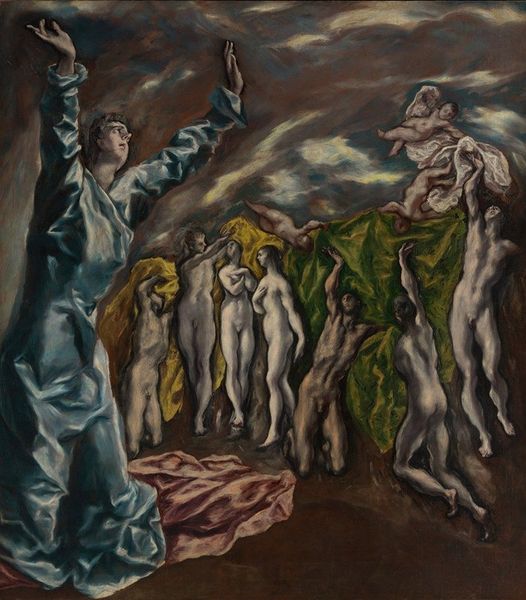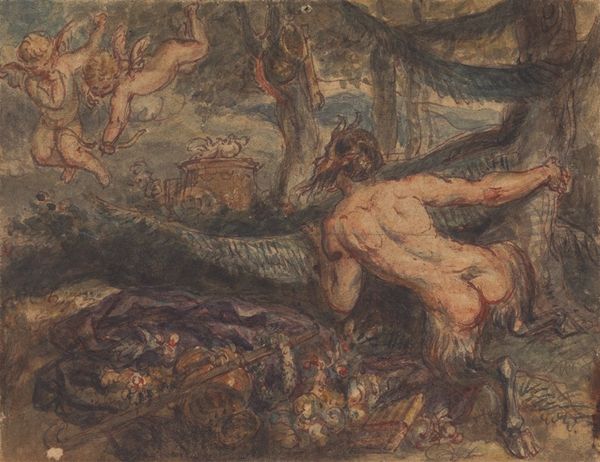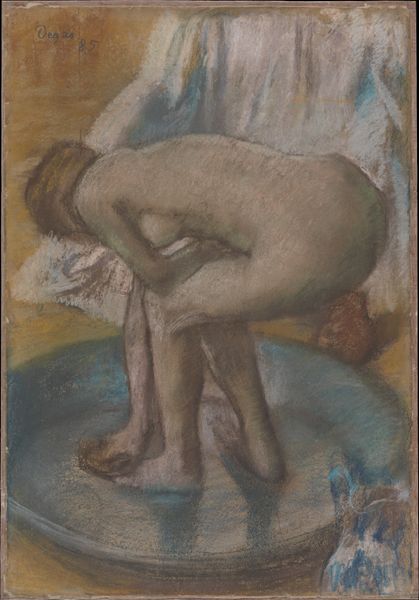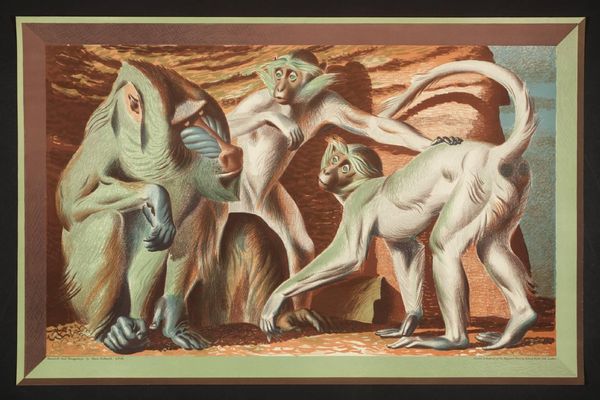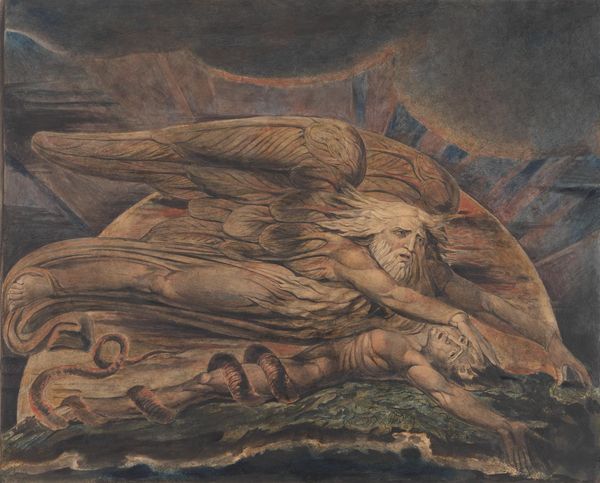
tempera, oil-paint
#
tempera
#
oil-paint
#
landscape
#
charcoal drawing
#
figuration
#
social-realism
#
oil painting
#
momento-mori
#
coloured pencil
#
pastel chalk drawing
#
neo-romanticism
#
genre-painting
#
history-painting
#
realism
Copyright: A.C.Fine Art Inc.
Alex Colville made this painting, Bodies in a Grave, Belsen, in 1946. Look at how he has built up the surface of the canvas with these sort of muddy, earthy tones; the way he’s really worked and reworked it, it’s almost like he's building a grave right there in front of us. I can see how Colville has constructed the bodies from thin layers of pigment, with each layer building depth and volume, but he doesn’t conceal the process. Instead, he makes the surface of the painting an active, visible record of his emotional response to the scene. The olive undertones create a sense of sickly pallor, and the lack of strong colour makes the bodies appear drained of life. See the body in the foreground, the way one arm is outstretched almost reaching out of the painting? To me, that gesture speaks to the horror of what happened at Belsen, a desperate plea for help from beyond the grave. There is something of Goya’s Disasters of War series in Colville’s unflinching gaze, the way both artists refuse to shy away from portraying the brutal realities of human conflict.
Comments
No comments
Be the first to comment and join the conversation on the ultimate creative platform.
